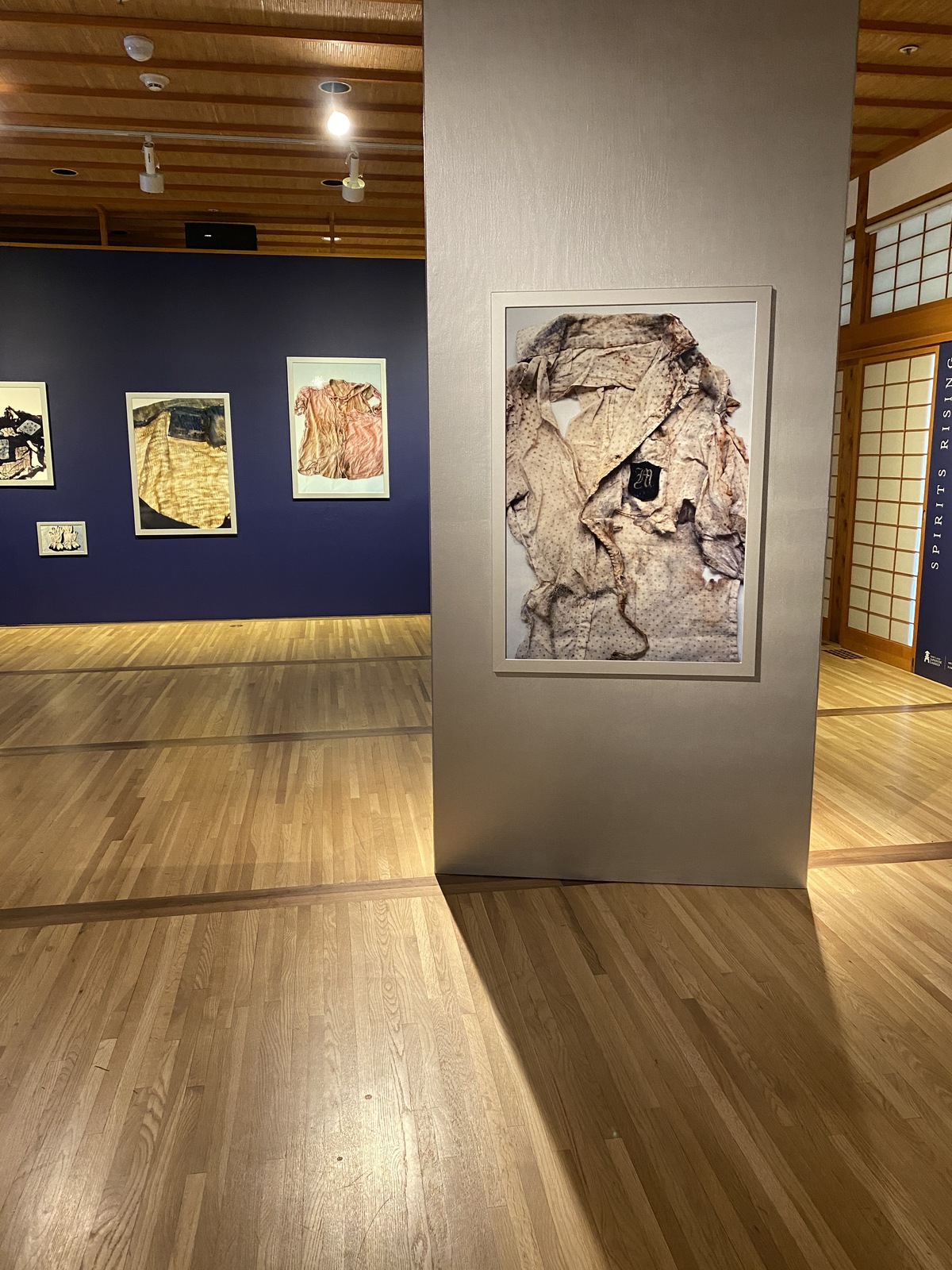
In commemoration of the 75th anniversary of the end of WWII, the Portland Japanese Garden is recognizing 2020 as the “Year of Peace.” The garden has started the year with an exhibit called “Spirits Rising: ひろしま / hiroshima” by Ishiuchi Miyako, open from Jan. 18 until March 15 in the Pavilion and Tanabe Galleries. The exhibit features photos of items and clothing left behind by the victims of the atomic bomb dropped on Hiroshima at the close of WWII.
The artifacts themselves are all housed in the Hiroshima Peace Memorial Museum, which receives donations and artifacts from the family members of those that died. The museum invited Miyako to document the items, after seeing her photography series documenting her late mother’s belongings. After her mother died in 2000, Miyako took pictures of her mother’s possessions, like her lingerie and lipsticks, as a means of coping with the death.
Like her “Mother’s” series, Miyako’s Hiroshima series seeks to connect the past and present, focusing on memorializing the human touch. According to Lead Gallery Attendant Mona Ozaki, prior to Miyako, mostly men had documented the Hiroshima artifacts, taking photos in black and white in a forensic-like style. Ozaki described how Miyako’s style differed from this.
“When she went in and started interacting with the items, she began to feel a sense of the spirit of the people and wanted to convey that,” Ozaki said. “So she is working in color, and she’s working in this large format.”
Many of the pieces — like a photo of a women’s dress and a tarnished blouse — are near life-size. Yet unlike most exhibits, the pieces do not have descriptions. According to the gallery attendants, Miyako wanted viewers to focus less on reading descriptions and more on connecting with the items and the people who wore them.
Julia Marshall, the other lead gallery attendant, further described Miyako’s intent behind not including descriptors.
“The artist wanted everything to be left to interpretation,” Marshall said. “In the Hiroshima Peace Memorial, there are the artifacts and then there are descriptions, and is a very documentary-like approach. (Miyako) didn’t want that. She wanted these artifacts to be recognized as they were, not just for their history, but as beautiful items of clothing and accessories because each of those items touched human skin.”
The photographs are laid out asymmetrically within the gallery. Marshall explained that Miyako wanted to give an illusion of the Hiroshima spirits being present in the gallery through this dynamic arrangement.
“So as you can see, they’re all floating,” she said. “So in a way, they’re all moving. Even the way they’re laid out, shows movement with all the folds and wrinkles and clothing … that’s why some photographs are higher than the other, and then some of these are also lit from a lightbox or shot on top of a lightbox, to show the intricacy of the textiles.”
The doors of the Pavilion Gallery, the main location of the exhibit, are open behind some of the photographs to give an impression of a spiritual glow. The walls of the gallery are made of shoji, or translucent paper panels, intended to integrate the space with the surrounding garden. The veranda outside of the Pavilion offers a view of the outside flat garden, which is meant to be viewed from this single point like a landscape painting.
The Portland Japanese Garden was founded in the late 1950s to give Portlanders an opportunity to connect with the serene cultural landscape, as well as to build a greater cross-cultural understanding with Japan post-WWII. Ozaki explained that the garden decided to recognize 2020 as the Year of Peace and feature this exhibit because it was founded upon a desire to repair relations with Japan.
“We need to face what we did—this is the effect of what we did,” Ozaki said. “People are still donating things to the (Hiroshima Peace Memorial Museum). So they’re still grieving or dealing with the aftereffects.”
Throughout the year, the garden will hold exhibits featuring Japanese calligraphy, architecture and glass sculptures mimicking water patterns. The Year of Peace will conclude with a photography exhibit exploring the healing power of Japanese gardens for internees at Manzanar Relocation Camp during WWII.
“There’s so much to WWII,” Ozaki said. “There’s the whole internment of Japanese Americans, which we will deal with in our last exhibit this year. But it’s fraught. There’s so much that we could do wrong and that we could do right. It’s not going to be the easiest year in the gallery … but it’s an opportunity to have these conversations.”
Subscribe to the Mossy Log Newsletter
Stay up to date with the goings-on at Lewis & Clark! Get the top stories or your favorite section delivered to your inbox whenever we release a new issue.

Leave a Reply